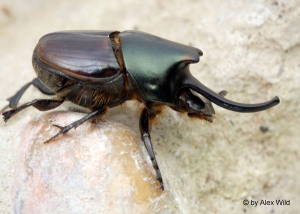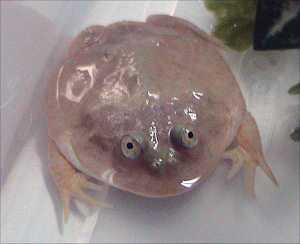It seems that I have neglected my blog a bit this month, but thankfully this is due to an exciting (and exhausting!) month of travel! As of June 1st, I have been to 10 states, 4 time zones, and 2 countries!
I began my whirlwind month in Maryland visiting my family and attending Alumni Weekend at my undergraduate institution, St. Mary’s College of Maryland. This trip was full of crabs, sunshine, and reminiscing with old friends. All in all, it was a great way to get reenergized for conference season!
Speaking of conferences…
A few months ago, I gave a talk at the Northwest Regional Society for Developmental Biology (SDB) meeting, and was beyond excited to win a travel award to attend SDB’s national meeting! Excitingly, this year the national SDB collaborated with other international societies to host the 17th International Congress of Developmental Biology!
The conference was fabulous, and I could blog for hours about all of the amazing science that I got to hear about at the conference. But to save us all some time, here are my top 5 highlights of my trip to ICDB 2013!!
#1: The meeting was held in CANCUN, MEXICO!
Here’s a photograph from my hotel room: 
And another from my favorite beach chair:
Need I say more? The location was absolutely incredible, with a very quick walk to the convention center, seen here across the street from my hotel:
Located on the top floor of the Cancun Convention Center, the meeting was held in one large room that was easily separated into 3 concurrent sessions for some of the afternoons. The layout of the meeting made it really easy to bounce between rooms, so you could catch talks in all sorts of topics and disciplines. Additionally, posters were constantly on display in the break room, giving attendees plenty of time to scour the 600 excellent posters!
#2: Enhancers play a role in human disease, evolution… and just about everything you could imagine.
Enhancers really stole the show at this year’s meeting. Many of the talks, a large number of posters, and a lot of coffee break chatter surrounded some fascinating studies into the role of these noncoding regions of DNA in development.
For my developmental biology novices, let’s quickly define enhancers. Our genome consists of long sequences of DNA, in which some regions code for functional proteins, and some regions do not. Enhancers are found within this noncoding region of DNA and are thought to modulate the activity of proteins transcribed from nearby regions of coding DNA.
How do we identify enhancers? Chicks are often the best tool for identifying conserved enhancers, as their genome is compact and conserved noncoding regions are likely to contain important regulatory information.
Scientists have long been confused about how mutations in noncoding regions of DNA lead to human disease, but as described at ICDB 2013, many of these mutations are starting to be identified as being located within enhancer regions.
One of my favorite talks of the week was from Harvard’s Cliff Tabin. Many human traits seem to have regressed from the traits found in monkeys (less body hair, shorter fingers, etc.). Regressive traits often come from loss of enhancers upstream of trait-determining genes. Cliff’s lab has demonstrated that the human genome is enriched for deletions in transcription start sites and enhancer regions, suggesting that loss of enhancers did in fact contribute to our regressive loss of monkey-like traits.
For more information on the ICDB enhancer talks, check out the lab websites of Cliff Tabin, Marianne Bronner, and Alvaro Iglesias!
#3: There was a WHOLE SESSION on how the environment impacts development!
My particular interest in developmental biology focuses around the long-term impact of environmental stress on phenotype and physiology. I was pleasantly surprised to find an entire session of talks dedicated to this topic!
While many human diseases can be attributed to genetic predisposition, environmental conditions can exaggerate these disease phenotypes. Sally Dunwoodie gave a great talk discussing how low oxygen conditions (hypoxia) during early development increases the penetrance of genetically heritable scoliosis. Teiya Kijimoto demonstrated that genes involved in classical developmental decisions, including Hedgehog signaling, also control environmentally induced traits, such as horn size in dung beetles!
#4: Improving undergraduate interest in research with projects designed straight from the headlines!
The education section of ICDB 2013 focused on how we can interest students with research projects on current hot topics in the media. I think this a great idea, as it is so much easier to get excited about science when you know that you are contributing to a relevant and important cause.

Barresi lab uses Deepwater Horizion oil spill as inspiration for undergraduate research (Photo credit: Wikipedia)
For example, Michael Barresi described the upper division research course he designed to investigate the effects of the Deepwater Horizon Oil spill on the development of fish in the Gulf of Mexico. Tyrone Hayes gave an eye-opening talk on the impact of the pesticide atrazine on the sexual behavior and fertility of frogs. Additionally, Tyrone showed correlations between his research on frogs and the decline in fertility of men in close contact with pesticides.
#5: Alternative model organisms are awesome!
As a scientist who works in a commonly used model organism, I am always impressed by the amount of work that goes into the implementation of new and alternative model organisms. This meeting did not disappoint, as I got to hear some really great talks about using tunicates, frogs, and honeybees for scientific research. Many of these tools are being developed to overcome the shortcomings of our current model systems and allow us to address questions that are currently unanswerable.
Nanette Nascone-Yoder introduced the Budgett’s frog- a giant cannibalistic Xenopus alternative that allows for higher resolution of frog development!
Robert Drewell discussed how DNA methylation in the eusocial honeybee is a new example of genomic imprinting!
—————————–
To summarize, the ICDB 2013 meeting was a great experience!
Tomorrow, I am off to the International Caenorhabditis elegans meeting at UCLA! Follow me on twitter @em_fawcett and look for my live tweets with #worm2013!
And look forward to another top 5 blog post next week!






